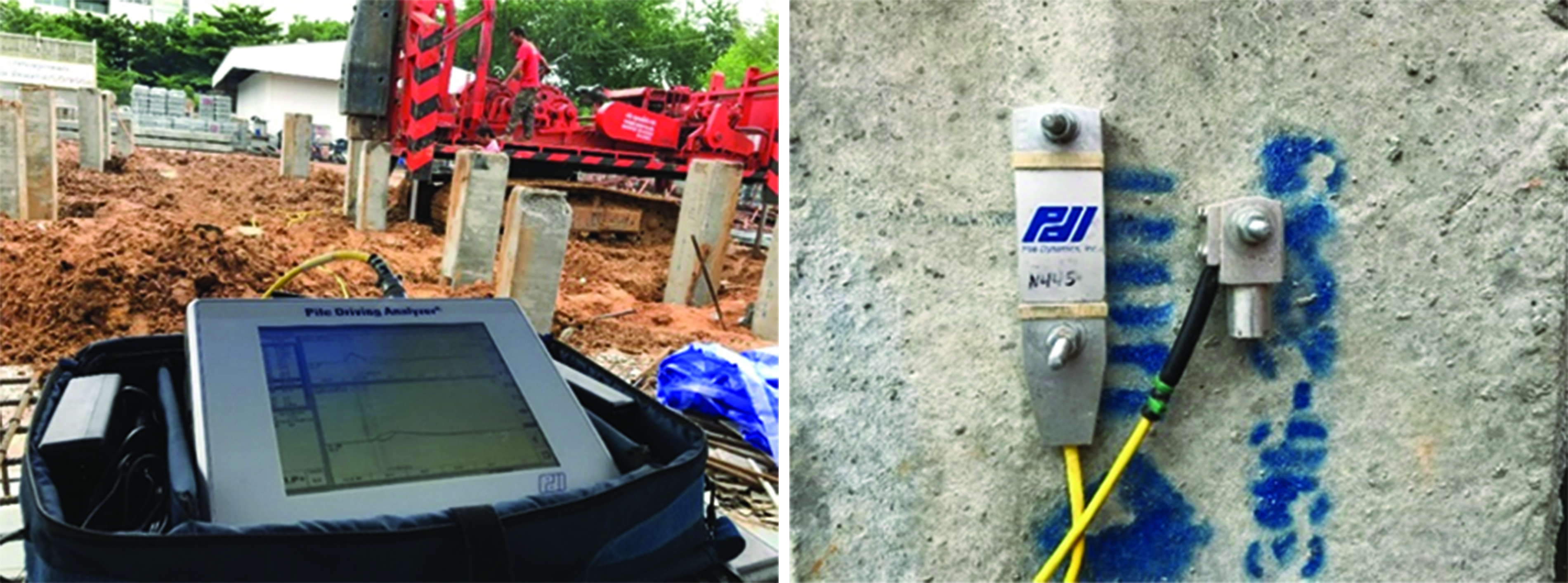A Comparision of Bearing Capacity of Pile from Pile Driving Formulas and Dynamic Load Test
Main Article Content
Abstract
The objective of this research in to evaluate the bearing capacity of pile by using pile driving formulas such as Hiley’s Formula, Engineering News Formula, Danish Formula and Janbu’s Formula to compare, relationship between and the optimum factor of safety with Dynamic Load Test results. The ultimate load of a pile was calculated process by Case Pile Wave Analysis Program (CAPWAP). The Results showed that the pile driving formulas that was similar of ultimate bearing capacity by Dynamic Load Test was Hiley’s Formula, Engineering News Formula, Danish Formula and Janbu’s Formula, respectively. Whereas the Hiley’s Formula provides the most reliable and close test results (R2 = 0.831), Danish Formula and Janbu’s Formula have a chance to fail if used. Furthermore, by using the factor of safety recommended by E.I.T. to reduce load carrying capacity from each all of pile driving formulas are safe, Hiley’s Formula and Engineering New Formula is lower load, making it very safe but the construction costs will increase. The researcher found the appropriate safety factor of each formulas as follows Hiley’s Formula, Engineering News Formula, Danish Formula and Janbu’s Formula are equal to 2.5499, 2.2555, 3.7095 and 4.2525 respectively.
Article Details
References
[2] Thasnanipan, N., Submaneewong, C., and Chanchad, C. (2007). A Comparision Between Static and Dynamic Pile Load Tests for Bored Pile Capacity Prediction. In 12th Nationnal Convention on Civil Engineering. Phitsanulok. Vol. 3, (GTE). pp. 253-258.
[3] Thaveelert, P. (1996). Evluation of Dynamic Pile Load Test Performance in Bangkok and Rayong Subsoils. Master Thesis. Department of Civil Engineering. Chulalongkorn University. Bangkok
[4] Patanasakpinyo, T. (2015 Qualty Control of Pile Driving by Danish Formula in Valaya Alongkorn Rajabhat University Under The Royal Patronage. VRU Research and Development Journal Science and Technology. Vol. 10, No. 2, May - August 2018, pp. 43-53 (in Thai)
[5] Yuyongwattana, W. (2016). A Comparision of Pile Driving Formulas. Rangsit University Journal of Engineering and Technology, RSUJET. Rangsit University. Bangkok, Vol. 19, No. 2, pp. 21-31
[6] Fragaszy, J. R., Argo, D., and Higgins, J. D. (1988). Comparison of Formula Predictions with Pile Load Tests. Transportation Research Record 1219. pp. 1-12
[7] Rajagopal, C., Solanki, C. H., and Tandel, Y. K. (2012). Comparison of Static and Dynamic Load Test of Pile. Electronic Journal of Geotechnical Engineering (EJGE). Vol. 17, pp. 1905-1914
[8] Kuntiwattanakul, P. (2017). Pile Set-up in Bangkok Subsoil. The 2nd National RMUTR Conference. Building Innovation 2017 : Sustainable Smart Building. pp. 32-39
[9] Komurka, V. E., Wagner, A. B., and Edil, T. B.(2003). Estimating Soil/Pile Set-Up. Final Report Submitted to the Wisconsin Department of Transportation, September, Wisconsin Highway Research Program#0092-00-14, pp. 55
[10] Engineering Institute of Thailand. (1978). Pile Bearing Capacity. The Engineering Institute of Thailand Under H.M. The King’s Patronage. Bangkok
[11] Seubsai, S. (2006). Geographic Information System Application for Database of Pile Dynamic Load Test in Bangkok and its Vicinity Areas. Master Thesis. Faculty of Engineering. Thammasat University. Bangkok


